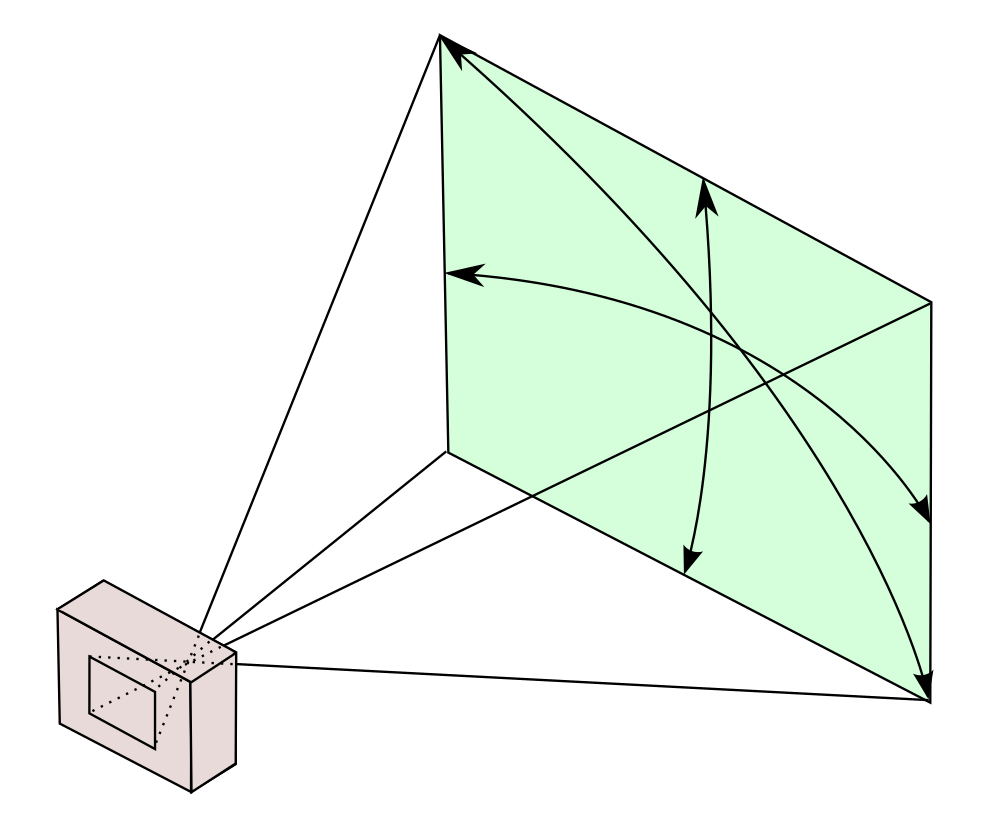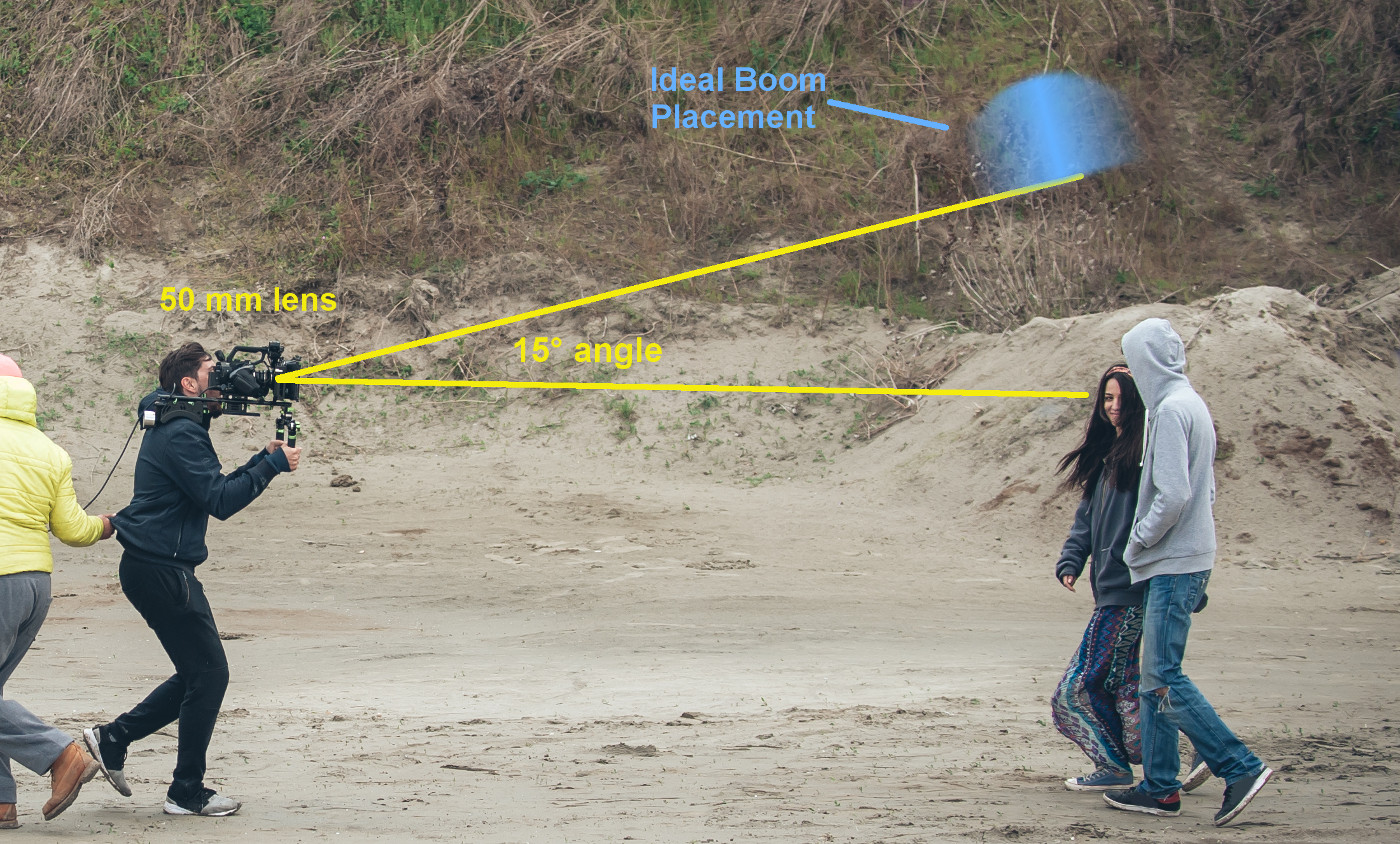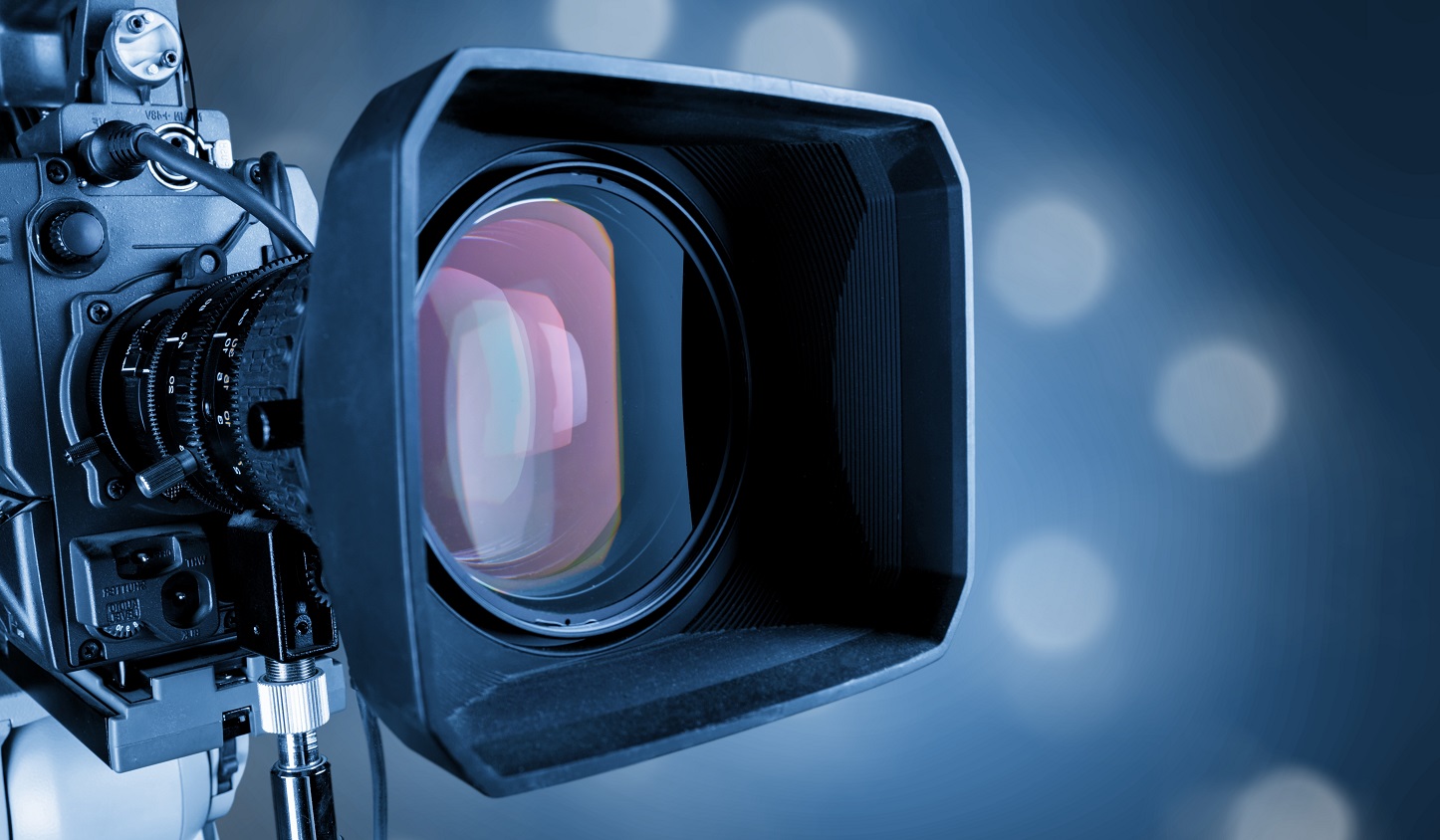Common Lenses
During the course of working with different camera operators, some of the more common lenses that I encounter being used are Zeiss Super Speeds. These lenses often come in a set consisting of 18mm, 25mm, 35mm, 50mm, and 85mm.1 A general rule of thumb for boom microphone placement is as close as you can get to the sound source while still staying outside of the frame of view. Due to the fact that the field of view changes with the lens used, a way to approximate the ideal location can be helpful.
Angle of View
The angle of view for a camera lens is typically given in three directions as shown in the diagram below.2 For the purpose of ideal boom placement, the vertical angle is usually the most significant.

Camera Angles
As a sound recordist, I’m primarily concerned with the vertical half-angle. This angle covers an arc which is half of the full vertical field of view. If I know what lens is being used, I can gauge the top of the frame that the camera operator is seeing when looking through their lens piece. By knowing this, I can estimate where to safely place my boom microphone. During fast paced work with a lot of movement this can help get me in the ballpark of where I need to be to maximize the audio signal while staying out of the frame. From tables that detail common angles of view for lenses of different focal lengths, some rules of thumb can be arrived at.2
| Focal Length (mm) | Vertical Half-angle (°) | Thumbrule (°) |
|---|---|---|
| 18 | 34 | ~35 |
| 25 | 26 | ~25 |
| 35 | 19 | ~20 |
| 50 | 14 | ~15 |
| 85 | 8 | ~8 |
In practice, this winds up being used in a similar fashion to the picture below. In some situations, coming from below the frame is also an option.

- Matthew Duclos, “What’s In A Name? A Guide to Zeiss Super Speeds,” The Cine Lens, August 24, 2016, https://thecinelens.com/2016/08/24/whats-in-a-name-a-guide-to-zeiss-super-speeds/. [↩]
- “Angle of view,” Wikipedia, last modified March 23, 2020, https://en.wikipedia.org/wiki/Angle_of_view. [↩] [↩]




